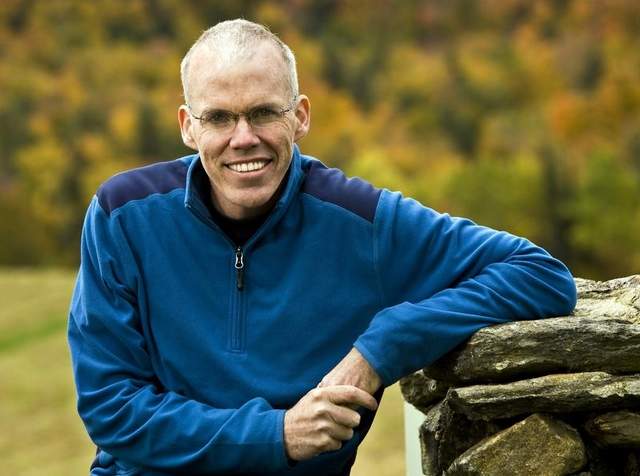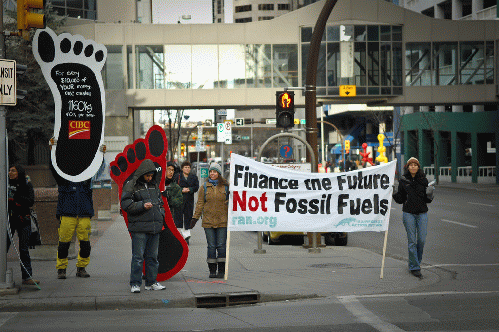From New Yorker
I've been writing this column for almost a year now, trying to shine a light on many of the climate crisis's facets. Once in a while, it's important to pull back and try to put it all in perspective. Now is such a time: this month marks the fifth anniversary of the Paris climate summit; we've more or less survived the Trump Administration, with an incoming Administration promising a new approach; and we're less than a year away from what will be the next great global climate meeting, in Glasgow, Scotland. (On a personal note, I'm subsiding into emeritus status at 350.org, the climate campaign I helped found, and I turn 60 this week -- since I started writing my first book about all this when I was 27, this milestone means that I've spent four-fifths of my adult life wrestling with the climate problem.) Where do we stand? Take a deep breath.
All discussions of the climate crisis start with science, and the science is grim. Despite a La Nià �a wave cooling the global temperature in 2020, this year will vie for the hottest on record. It's already seen what could be the highest temperature ever reliably recorded (a 130 degrees, in California), and devastating wildfires in Australia, Siberia, the American West, and South America, where about a quarter of the Pantanal, the largest wetland on earth, burned. Thirty named storms formed in the Atlantic, leading to a record hurricane season.
But those dramatic moments obscure the more devastating and silent changes. The Australia-based climatologist Andrew Glikson recently catalogued some of them for Arctic News: over the past four decades, the globe's tropical zones have expanded by about two degrees latitude. The "shift of climate zones toward the poles," Glikson writes, "is changing the geography of the planet." June saw the temperature top 100 degrees in Verkhoyansk, Siberia, likely the highest ever recorded above the Arctic Circle. As northern sea ice melts, the jet stream weakens, allowing warm air masses to penetrate farther north; one result this year has been the fires in Siberia -- which began burning the peatlands that hold huge stores of carbon. In Australia, the tropical zone of the north is pushing farther south, and the coastal population centers are ever hotter and drier. The implacable rise of the oceans is accelerating, and some of the most important physical systems on the planet seem at tipping points: in the Amazon, where deforestation is escalating under Jair Bolsonaro's Brazilian government, researchers say that a 20- to 25 percent loss of forest cover could trigger large areas of the forest to become savannah; at the moment, the figure is about 17 percent.
People caused the climate crisis, of course, but the definition of which people gets more precise over time. Research indicates that the wealthiest 10 percent of the world's population -- those with net incomes above 38 thousand dollars a year -- account for more than half of all carbon emissions. The wealthiest one percent produce more than twice the carbon that the poorest 50 percent do. But the effects of climate change are unjustly reversed: the less you did to cause it, the sooner and harder you feel its effects. Last month, when Hurricanes Eta and Iota hit Central America, the damage was "beyond compare," Admiral Craig Faller, of the U.S. Southern Command, which was helping relief efforts, told the Times. "There are some estimates of up to a decade just to recover," he said. Before then, displaced Hondurans and Guatemalans may trek in large numbers to the southern border of the United States, the Times reports, presenting a test for a Biden Administration that "may find it politically difficult to welcome a surge of migrants." Those migrants would only be, however, part of an advance guard; estimates for the number of climate migrants around the world by 2050 range between 25 million and a billion people.
To put it simply, the temperature is increasing steadily and at a pace scientists had predicted. (The latest figures from Columbia University's James Hansen and other climate scientists suggest an acceleration of warming over the past few years.) "We have entered a new climate," the meteorologist Jeff Masters, a contributor to Yale Climate Connections, said last week. "Heat is energy and when everything else comes together," he added, "things are going to go bonkers."
Given the pace of physical change, the question becomes how fast societies can move to counter it. So far, the signs are not encouraging: emissions of carbon dioxide and methane continued to rise through 2019. They dipped in 2020, during the pandemic shutdowns, but the curve is now back on the upswing. Still, we do seem to be approaching an inflection point -- a peak in the burning of hydrocarbons -- that the pandemic may have moved forward a little. For a decade, engineers have been steadily driving down the cost of solar and wind power and of the batteries required to store it. This is now the cheapest power in the world, which opens up possibilities that didn't previously exist for rapid and mass-scale change; electric cars, to give one example, are quickly transitioning from expensive toys to cheaper, better consumer products. Joe Biden, in other words, has far more scope for decisive action than Barack Obama did, just four years ago, though a Senate left in Majority Leader Mitch McConnell's hands would make acting on that opportunity difficult.
(Note: You can view every article as one long page if you sign up as an Advocate Member, or higher).






